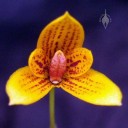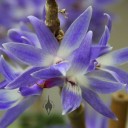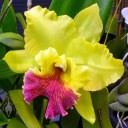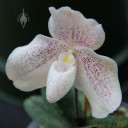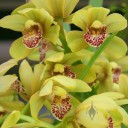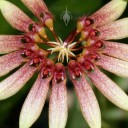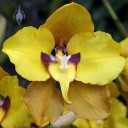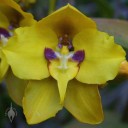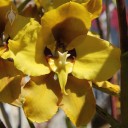Tiny Orchid Treasures
Posted October 11th, 2011 by Marc CohenCategories: Books, Mini Orchids, Photos
Miniature orchids have all the beauty of their larger cousins, but only take a fraction of the space. These tiny treasures enable orchid lovers to assemble a tropical collection in a single room, on a windowsill, or under lights. Mini forms exist in the Phal, Catt, Cymbidium, Dendrobium, Masdevallia, and Oncidium families, to name a few. The half dozen varieties pictured here are just a drop in the bucket of what’s available.
There’s no formal height rule, but generally mini orchids are plants sized half an inch (1 cm) to half a foot (15 cm.) Some types have taller flower stems, but they’re still considered minis. Many of these compact plants have relatively large blooms, especially compared to their small leaves. There are also varieties with tiny flowers which can be tough to appreciate without a good camera or magnifying lens, like this Lepanthopsis. When growing minis, it’s extra important to water thoroughly and maintain high humidity, since they can quickly dry out on hot or windy days.
Whether you grow minis or not, you can enjoy great books about them. Miniature Orchids details hundreds of petite hybrids and species. Author Steven Frowine includes useful care info, beautiful pictures, and helpful lists of minis by light requirements, ease of culture, fragrance, and more.
Miniature Orchids and How to Grow Them is a classic book by famed orchid author Rebecca Tyson Northen. As a biologist, she was one of the first to simply explain orchid care for amateurs when orchids became mass-marketed plants in the 1960’s and 1970’s. She wrote several care books, and this one helped to popularize these tiny orchid treasures.
